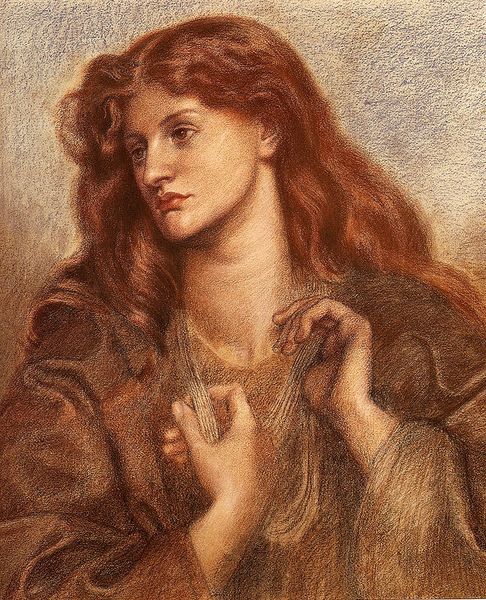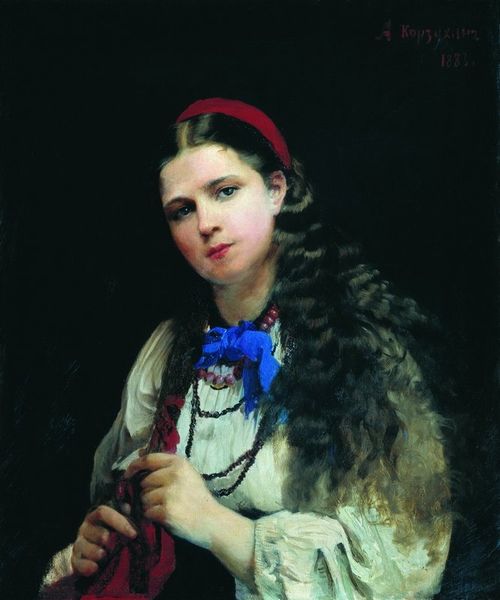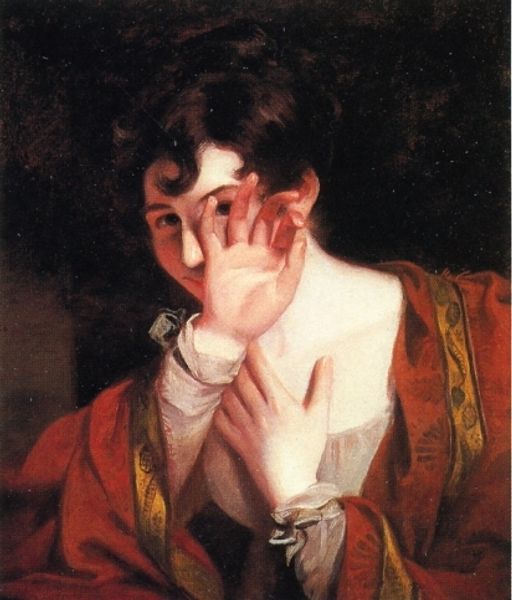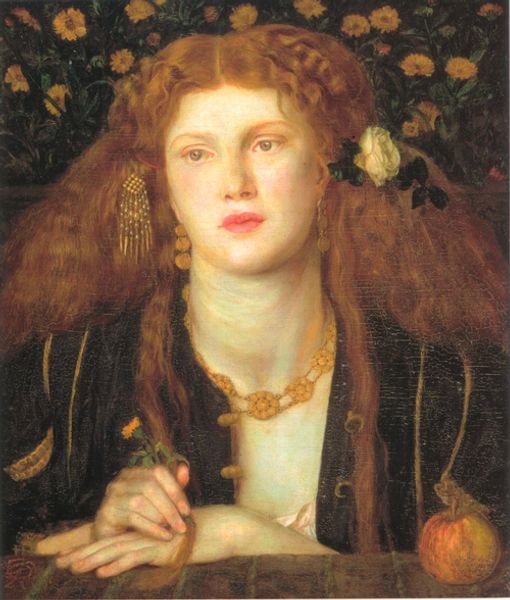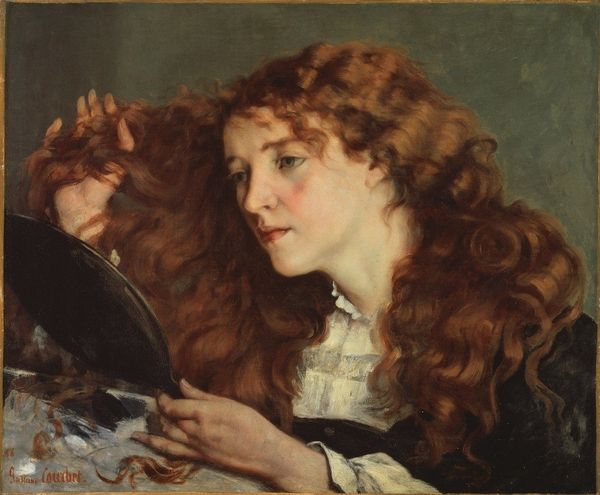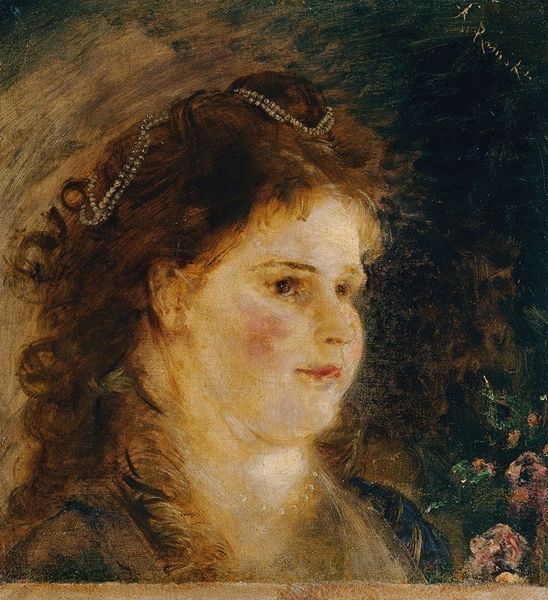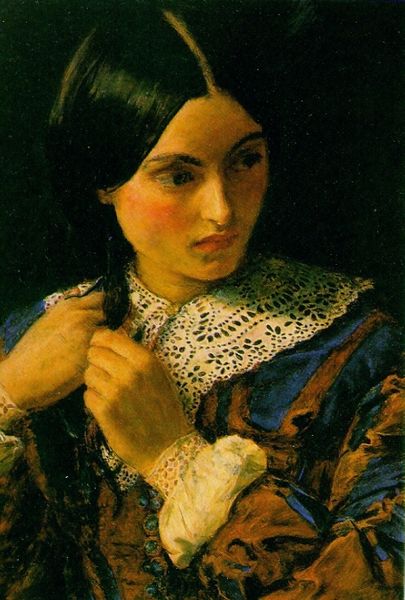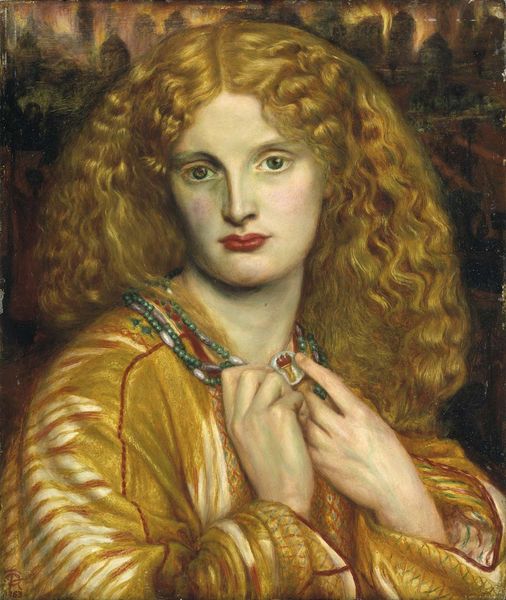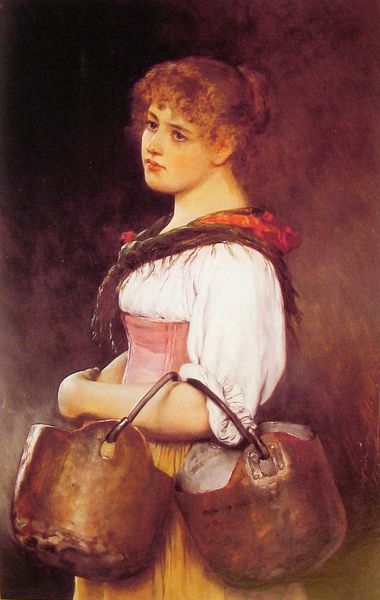
Dimensions: 38.1 x 30.2 cm
Copyright: Public domain
Editor: We're looking at "Joli Coeur," an 1867 oil painting by Dante Gabriel Rossetti. The portrait is quite captivating, with the subject’s gaze being central. What do you see in this piece, considering its composition? Curator: Focusing solely on the pictorial elements, notice the symmetry that Rossetti establishes. The face is framed by the hair, and then again by the necklace, drawing attention to her expression. However, the asymmetry of her gaze, slightly off to the side, introduces a compelling tension. Editor: That tension is really interesting. Are you saying it's less about who she is, and more about how Rossetti structures the image to create a feeling? Curator: Precisely. Observe the restricted color palette dominated by the reddish hues of her hair, necklace, and clothing, contrasted against the dark background. This limits depth but also draws our focus toward those very forms. Her pale skin offers an additional striking contrast, effectively serving the formal structure of the artwork. How does that strike you? Editor: The composition really does draw my eye. The way Rossetti uses color to highlight certain areas seems like he's directing the viewer's experience in a calculated way. The tension almost feels deliberately constructed. Curator: Exactly. The tilt of her head, the direction of her eyes, the restricted palette…all contribute to a deliberate formal structure. Rossetti masterfully uses these formal elements to elicit an aesthetic response. Editor: That's so interesting. I’ll definitely look more closely at how artists use these elements in the future. Curator: It's about the underlying language of visual expression. With an understanding of that language, we can reveal new perspectives on how artworks speak.
Comments
No comments
Be the first to comment and join the conversation on the ultimate creative platform.
